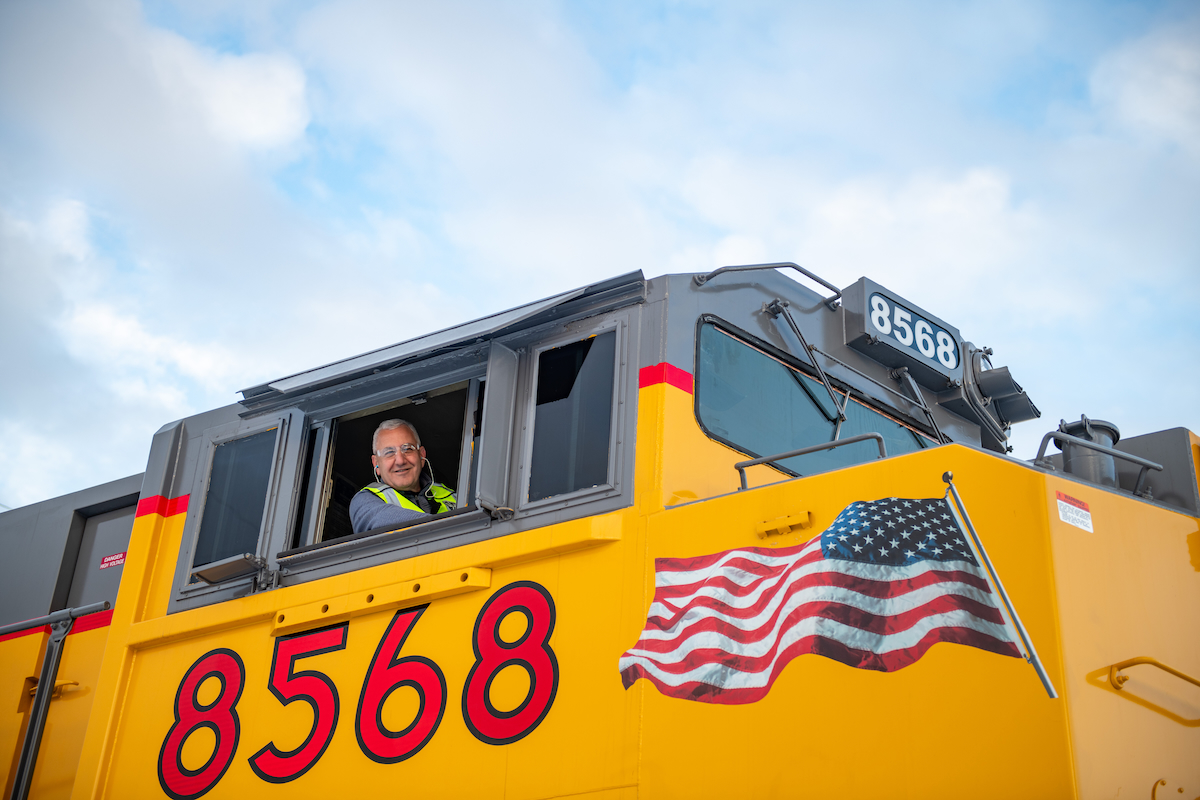
Well, I put a bee in Jim Vena’s bonnet when I wrote that railroads should thank the Federal Railroad Administration for its new two-person train crew rule. The thrust of that column last month: Service would suffer if the Class I railroads were to go to engineer-only operation because of delays related to having ground-based conductors respond to mechanical failures on the line of road.
The Union Pacific CEO says that take is wrong on three levels. First, Vena says, consider the big picture. If autonomous or semi-autonomous trucks take to the highways, railroads would need to respond to the competitive threat by reducing their costs. Second, you can’t stop the march of technology. Third, railroads would be smart about this. Rather than go all-in, they’d use a go-slow approach and take conductors out of the cab only when and where it makes sense.
Vena, in an interview in Chicago this month, emphasized that Union Pacific is not looking at shifting to one-person crews. The new regulation and current labor agreements would prohibit it, and Vena says he’d rather concentrate on modernizing work rules to give the railroad more operational flexibility and UP train crews more predictable schedules.
But things can change, and right now the U.S. Department of Transportation is working at cross purposes. On the one hand, it’s bending over backward to encourage the development of autonomous trucks, as well as systems that would allow one driver to control a platoon of big rigs. On the other hand it’s telling railroads they can’t go from two crew members to one despite technological advances like positive train control and locomotive cruise control systems that can automatically start, run, and stop trains.
Regulators want a successful railroad system, Vena says, and the last thing they’d like to see is freight shift to highways from rail. Yet that’s precisely what would happen if there’s widespread adoption of some level of self-driving trucks. Trucking costs would plummet and railroads would no longer be able to compete on price or service.
“We need to be ready for that. You can’t have your head in the sand and wake up one day and have a big piece of your competition that is much more efficient than you are. That’s what it’s all about,” Vena says.
And one way to reduce costs and boost efficiency is the use of one-person crews. Railroads could save anywhere from $989 million to $1.97 billion annually, according to an Oliver Wyman analysis that evaluated the savings under two different scenarios. The first would be taking the conductor out of the cab only on trains that don’t stop to set out or pick up cars en route. The second would be removing conductors from all trains that operate on high-density main lines.
The projected cost-savings from engineer-only operation are nothing to sneeze at, although labor costs have been diminishing on a per-train basis as railroads move their tonnage on fewer but longer trains. Truckers get far more bang for the labor buck by removing drivers from the equation.
Regardless of how the savings pencil out, Vena says technology will continue to improve and that railroads should take advantage of it. “Can we get to one person crews? Absolutely,” he says. “The technology will take us there.”
Many of the same safety arguments you hear against single-person crews today were made back in the 1980s when railroads sought to replace cabooses with end of train devices, Vena points out. Back then the skeptics insisted that a $4,500 metal box that monitors brake pressure and train speed could never replace the eyes, ears, and noses of the conductors and brakemen who kept a watchful eye from the cupola or bay window.

Vena began his railroad career as a brakeman on Canadian National in Jasper, Alberta, and eventually became a conductor and then an engineer. (“I am the only CEO that actually ran trains,” he notes.)
“I remember us having five people on trains and then four people on trains,” Vena said in an April interview. “Technology will move you ahead. That end of train unit replaced the caboose because it actually, if you’re a locomotive engineer … gave you way more information than the conductor and brakeman ever did. They were on the caboose as they were cooking their bacon and eggs on that stove downstairs.”
Railroads didn’t replace the caboose in one fell swoop, Vena notes. Instead, they addressed the myriad scenarios where the thinking was that the caboose couldn’t be replaced. One by one, those hurdles were cleared. And cabooses gradually were phased out.
When the technology, timing, and regulations are right, Vena envisions one-person crews being rolled out the same methodical way as EOTs, single-person operation of hump locomotives, or remote-control yard switchers.
Out on the main line, Vena says railroads would have to take into consideration a bunch of operational factors, such as terrain, accessibility from roads, and interactions with lineside communities before deciding where one-person crews might make sense. “I’ve never thought that the railroads could get down to a single person everywhere,” he says.
“But I’ll tell you, down the road we’ll come to a point where in some parts of the railroad it will make sense, just like we are operating some hump yard [jobs] with a single person. We’ve been able to do that slowly, safely, and make sure we get to the right place,” Vena says.
You can reach Bill Stephens at bybillstephens@gmail.com and follow him on LinkedIn and X @bybillstephens






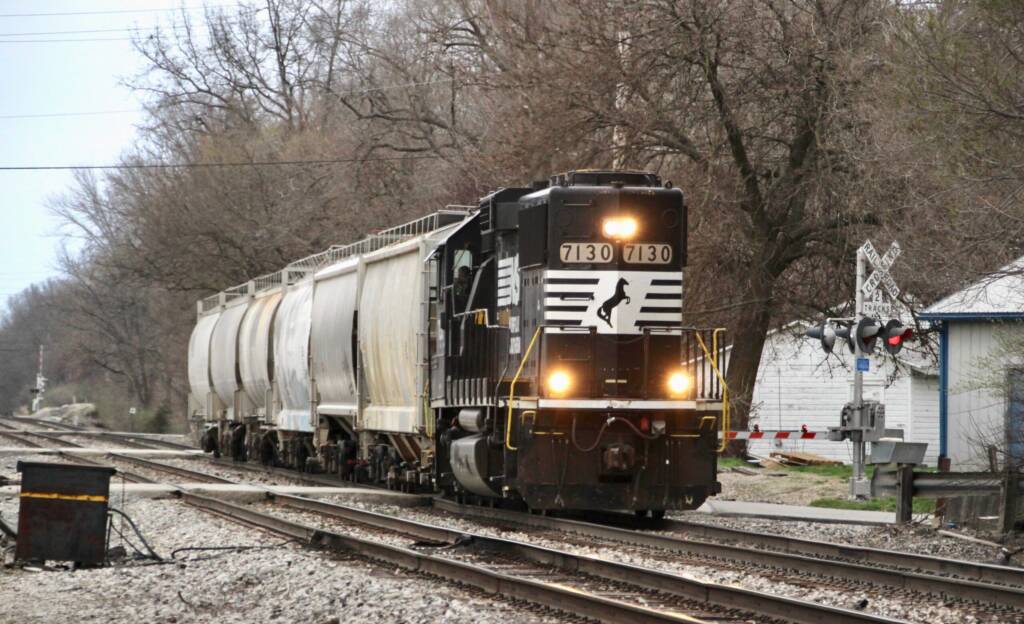
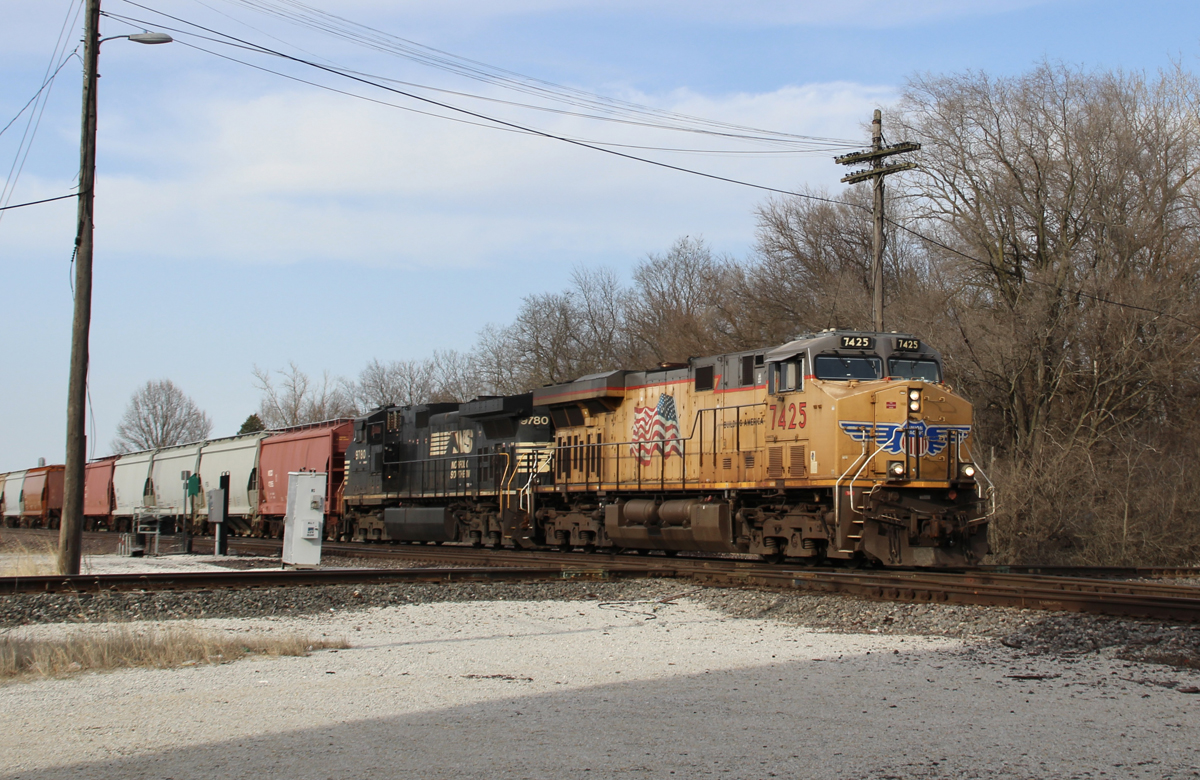
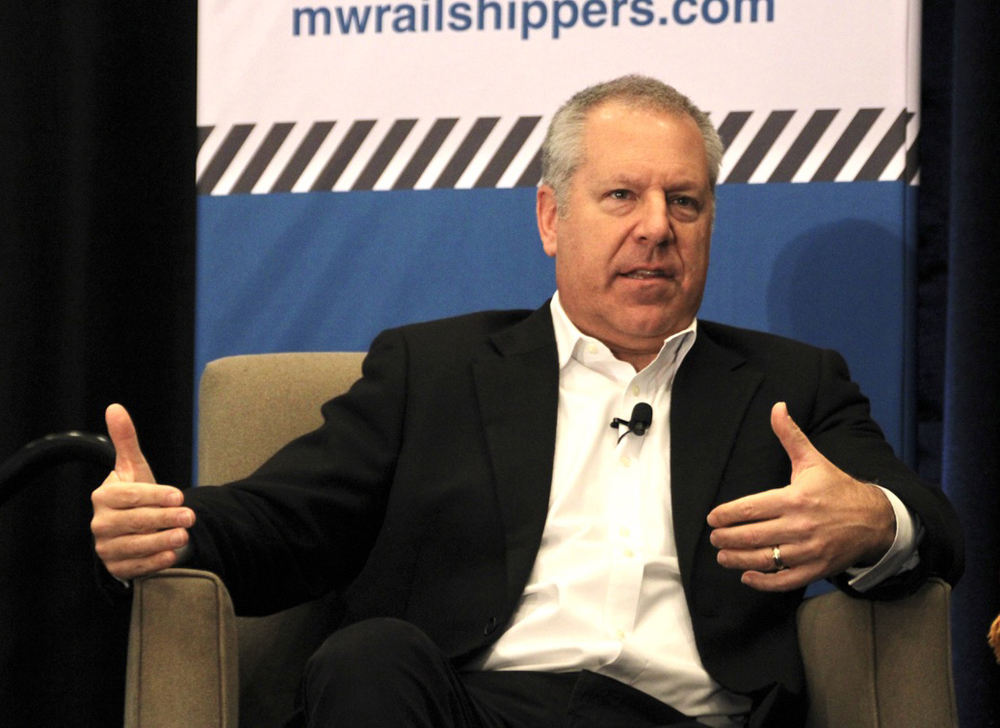
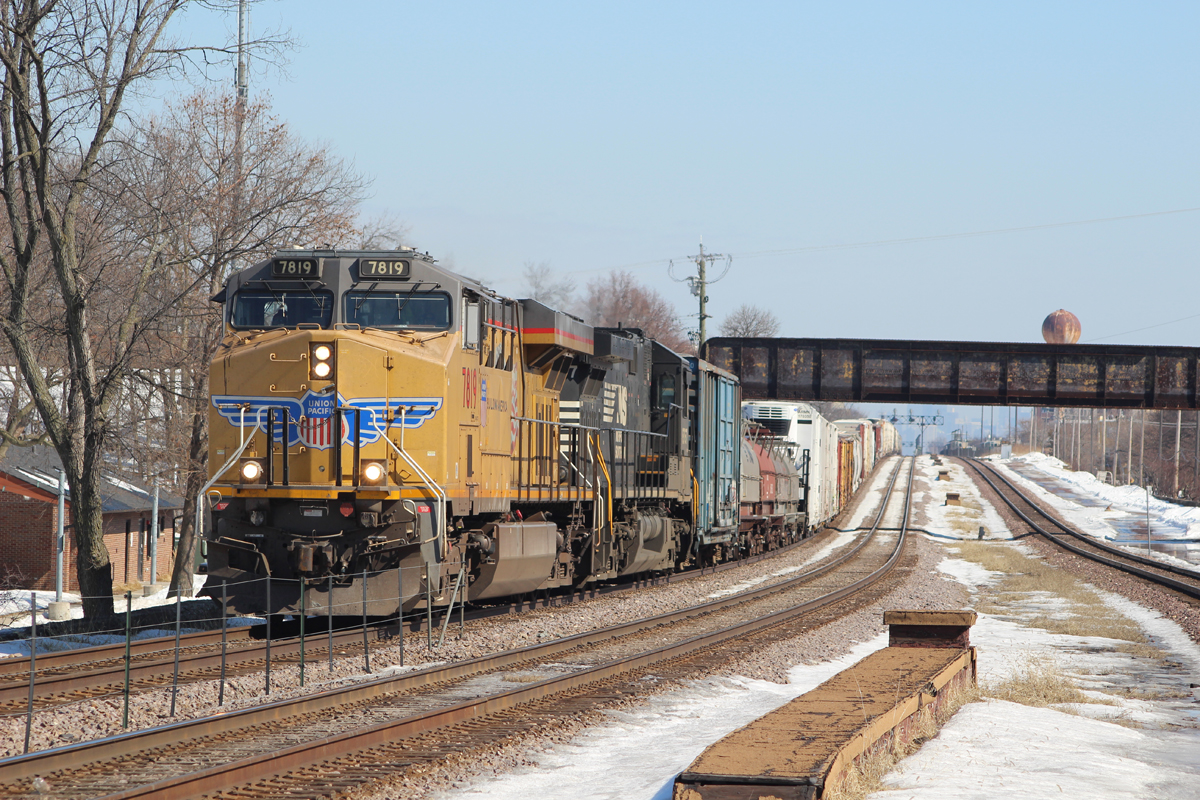




I call B.S. how can you even compare a autonomous truck with 1 52 foot trailer going down the road to a 14000 ft train with two people on it. I’m pretty sure the costs per mile are very comparable.
“Back then the skeptics insisted that a $4,500 metal box that monitors brake pressure and train speed could never replace the eyes, ears, and noses of the conductors and brakemen who kept a watchful eye from the cupola or bay window.”
And, we were right. East Palestine, Ohio would not have occurred had they had a manned caboose at the end of NS 32N.
I would not hold my breath for Automated Autonomous Trucks working in Platoon fashion, because the early ones, are bound to fail, and people will strongly object to them being on the road. The insurance companies, would only agree, because it will cost them more in pay-outs.
When you consider the cost of two crew members, compared to all the trucks on the road, that need at least one driver, that makes a mile long train with double stack containers, seem like the trucking industry would simply go out of business. Yet each time the Railroads merge and create larger railroads under the premise that bigger is better, and they will remove more truck traffic, never seems to materialize. The outcome, is even more trucks on the road! So, my feeling is that management, grows and receive even greater salaries that negate the proposed benefit. The actual people doing the work of transporting the goods, are always blamed for the railroads problems, not the management.
In Australia, where they run Autonomous trains, it is in the Western Desert, where accidents don’t wipe out a town or have any cross-road accidents. This is not often mentioned!
For the record I saw unmanned automated ore railway running in Labrador City in 1989. I was aiming to take its picture when it’s horn blew at me. But horn was automated for 15-second soundings. Automation will creep in.
But Big Worry is vote-seeking politicians and 3-man and then 4-man and then back to the NY 5-man crew which WAS the law until 1989.
The issue is not when technologies allow reduction to one person crews or safety for one person crews, but when economics and safety dictate crew-less operations. Rio Tinto Iron Ore Railway has been operating two-thirds of its 52 ore train fleet without crew on board since 2018-19. Leveraging emerging technologies they have largely automated end to end operations including mine rock wagon hauls, unloading to rail cars, train operations, rail car unloading, blending unique premium Rio iron ore blend, and ship loading. Autonomous operations are controlled from Perth 1500 km away and safety in operations is proven time and again. Their philosophy is to endeavour to remove people from line of fire and eliminate human error accidents. Their success is proving these technologies. It will not be long before society embraces new technologies with autonomous autos, trucks, shipping, rail, and eventually aerial transport. Unlike road traffic, railways own their own infrastructure with less risk to shared road traffic.
I see these 2-mile-long UP container trains speed thru Maricopa at 60 mph with hundreds of containers on board. Every one of those containers would take a separate truck with fuel and maintenance to move autonomously. How is it possible that costs of a single UP crew member could offset that difference? And ask yourself if you want to be the next victim of an autopilot on an electric vehicle. Sure, technology will advance, but so has congestion and aggression on our highways. Also consider how much highway maintenance backlog has increased and how truck contribute to that increase.
I can’t help but wonder what the cost to insure a fleet of autonomous trucks will be? Especially after a few calamitous multi-fatality accidents and related personal injury lawsuits.
It probably will require a Federal limit on Liability along the lines of what Amtrak has in order to get autonomous trucks insured. I can’t imagine any insurance company rushing to develop a policy for them at this point in time.
My question to Vena is, Who will save the Engine man who has a health emergency???? Never mind the train, It’s about the people!!!!!!
This individual health issue will probably be solved via the use of both a body monitor and panic button–or whatever else works. Technology-wise, it’s one of the more doable requirements for one person crews.
There are millions of people working on their own every day who face problems in case of a health emergency. That’s tough for those who unfortunately experience one–but the key focus remains to ensure their emergency doesn’t jeopardize others.
As far as individual employees working alone on potentially isolated sections of track and accompanying safety concerns, railway supervisors, inspectors, equipment mechanics, and signal employees have been doing that for over 50 years.
Newark Bay drawbridge disaster, 2-man crew didn’t keep that from happening. Back in 2013 a CSX engine crew were asleep at 8am near Fonda NY causing a head-on. Even PTC has its “flaws” with local freights’ doing switching I have read. Grim Reaper has not been totally outdistanced.
Mr. Vena is wrong when he says he is the only CEO that has run trains. Maybe on the big class one railroads he is the only one of the current CEO’s, but RJ Corman Railroad had Mr. Craig King as CEO from 2013 to 2016. He had me custom paint him a G scale RJ Corman GP38 as that was the first engine he ran, for his office desk. RJ Corman has 19 short line railroads in their quiver.
Jeff Damerst
How much will the technology required to eliminate one or even all onboard crew members cost to buy and maintain? Probably a lot more than the crews cost. If the railroads would provide reliable service, they could make enough money to keep everyone happy.
When only considering star-ups, you are correct. However, history shows that technology gets cheaper as time goes on and it gets further developed.
I’ve stated many times that I can see where one man operation could possibly work on future shorter runs but not with the long freights of today. I remain an advocate of having 2 engineers in the cab if today’s monster freights and long working hours are going to occur.
The first big rail strikes in the East came about because the RR’s came up with the idea of having multiple engines on longer trains with out increasing the rest of the crew. That technology won out and ever since, it’s been a reduction of manpower that has occurred periodically on the RR’s as the technology improves. I suspect someday the one man crew will be common but possibly subject to limitations.
Executives usually look only at money, and I’m sure the technology will “pay for itself” within two or three years, but that’s not the point. What “liabilities” will occur from one-man crews that are both seen and unforeseen?
Like I noted earlier, the elimination of cabooses led to East Palestine, Ohio. Of course, those who support that position will say, “just one train out of so many without cabooses in 40+ years.” Yeah…unless you LIVE(D) in East Palestine. God only knows how many other accidents could have been avoided with a caboose on every train.
There is this blind fascination with technology that seems to be unable to fathom failure. Radio frequency toys cannot replace another man in the cab. Period. Those who disagree: ever had a dropped mobile phone call?
One man in the cab? Sure Vena start with the corporate jet and let us know if you and your family will fly in it. How did engineer only work at Lac Megantic?
Exactly. Loco Motive sates the most obvious point, the easiest possible response that anyone with half a brain could come up with. Unfortunately, people with half a brain, or any fraction of a brain, don’t work at UPRR.
A child or my dog could explain it.
I took a 9 seat airliner across Alaska once on a 3 hour flight over mountains, tundra and even glaciers. I was more worried about the one engine than the one pilot.
The class 1 CEOs are driven by personal greed. For them, incidents like East Palestine are simply the cost of doing business and written of for taxes. They don’t care about public safety or quality of worklife for their employees.
Bill Stephens, why do we not have regular, lengthy interviews of union workers, or Railroad Workers United? Why only executives?
I recall as a kid the late 40’s early 50’s all the talk was atomic this and atomic that including private auto’s to even the Super Chief and how once we were on the new interstates the road would guide us to our destination no steering needed….yah,yah,yah…… Maybe someday but there is much yet to be done to make it safe without mentioning the ole dollar……………
Bill; my question to Jim Vena and his fellow C1 CEO’s would be just how much of the projected $989 million to $1.97 million in cost savings will be used to keep rates competitive with the autonomous trucks versus the amount directed back to shareholders.
If the majority of the theoretical cost savings go to the shareholders, the railroad industries’ competition argument is nothing more than BS.
Edit: that’s $989 million to $1.97 BILLION.
The only way autonomous trucks will work is if they have their own exclusive highway lanes physically separated from other traffic.
And isn’t that a railroad
I don’t think anyone from 20 years old and up will see self driving trucks. Look at all the problems with self driving cars. An my self I don’t want a 80,000 lbs big rig be hind me on the highway with no one in the cab. It’s bad enough now.
I’m 65 and I’m expecting self driving trucks in my lifetime easily. Not in the city but on the interstates. No cross traffic. No lights. Easy curves and grades. A human truck driver picks up the load in town, stages the truck just off the highway and sends them on their way. Another human retrieves the truck at the other end to the final destination. My car basically does that already with auto throttle, brakes and lane control.